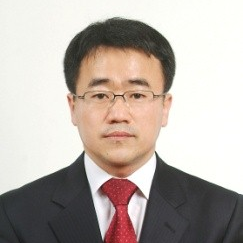Advanced Materials for Rechargeable Lithium Batteries
A special issue of Applied Sciences (ISSN 2076-3417). This special issue belongs to the section "Materials Science and Engineering".
Deadline for manuscript submissions: closed (30 June 2018) | Viewed by 20806
Special Issue Editor
Interests: lithium-ion battery; all-solid-state battery; Li–sulfur battery; Li–air battery; sodium-ion battery; electrochemical capacitor
Special Issues, Collections and Topics in MDPI journals
Special Issue Information
Dear Colleagues,
Electrical energy storage has become an important theme in our lives in the 21st century. Among the various energy storage systems, rechargeable lithium-ion batteries have been the most dominant power sources for mobile electronic devices for two decades due to their high-energy density and long cycle life. Recently, new applications, such as electric vehicles and energy storage systems, are gradually emerging in the market.
The main scientific and technical challenges of rechargeable lithium batteries today are developing and securing the advanced battery materials, such as anodes, electrolytes, separators and cathodes for meeting higher energy density, longer cycle life, low cost and enhanced safety. This Special Issue aims to provide and share recent research and developments on advanced battery materials for rechargeable lithium batteries, which include lithium-ion batteries, as well as next-generation batteries, such as lithium-sulfur, lithium-air and all-solid state lithium batteries. Researches on interfacial reactions and phenomena between electrolytes and electrodes will also be welcomed, because they play an important role in determining the stability, cycle life and safety of rechargeable lithium batteries.
Contributed papers will be of great interest to researchers working in the field of energy conversion and storage systems, and will provide a cornerstone for the continuous development of relevant technologies and specialized technological reinforcements. We welcome diverse contributions from material scientists and engineers, from universities, research institutes, and industries in these fields.
Prof. Dr. Dong-Won Kim
Guest Editor
Manuscript Submission Information
Manuscripts should be submitted online at www.mdpi.com by registering and logging in to this website. Once you are registered, click here to go to the submission form. Manuscripts can be submitted until the deadline. All submissions that pass pre-check are peer-reviewed. Accepted papers will be published continuously in the journal (as soon as accepted) and will be listed together on the special issue website. Research articles, review articles as well as short communications are invited. For planned papers, a title and short abstract (about 100 words) can be sent to the Editorial Office for announcement on this website.
Submitted manuscripts should not have been published previously, nor be under consideration for publication elsewhere (except conference proceedings papers). All manuscripts are thoroughly refereed through a single-blind peer-review process. A guide for authors and other relevant information for submission of manuscripts is available on the Instructions for Authors page. Applied Sciences is an international peer-reviewed open access semimonthly journal published by MDPI.
Please visit the Instructions for Authors page before submitting a manuscript. The Article Processing Charge (APC) for publication in this open access journal is 2400 CHF (Swiss Francs). Submitted papers should be well formatted and use good English. Authors may use MDPI's English editing service prior to publication or during author revisions.
Keywords
- Lithium-ion battery
- Lithium-sulfur battery
- Lithium-air battery
- All-solid-state lithium battery
- Battery materials (anode, cathode, electrolyte, separator)
- Interfacial phenomena
- Battery design, performance and safety





